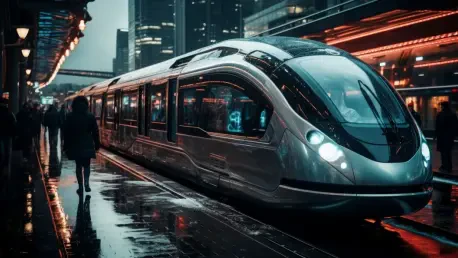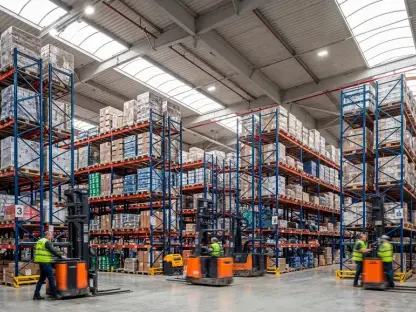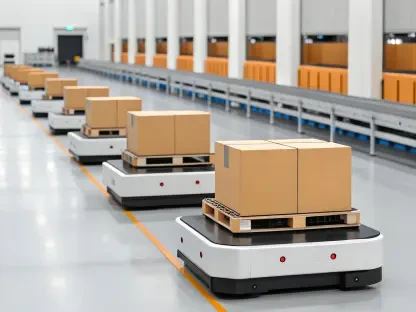Public transit systems across North America are at a critical juncture, grappling with financial constraints while striving to meet the rising demands for sustainable and efficient transportation, as millions of passengers rely on these networks daily. A staggering statistic emerges: nearly 60% of urban commuters in major cities depend on public transit for their livelihoods. This roundup dives into the latest updates from three prominent agencies—Denver Regional Transportation District (RTD), Tri-County Metropolitan Transportation District of Oregon (TriMet), and VIA Rail Canada—gathering insights and perspectives from industry voices to explore their milestones, challenges, and strategies. The purpose is to illuminate how these organizations navigate shared struggles and unique aspirations, offering a comprehensive view of public transit’s evolving landscape through diverse opinions and expert analyses.
Why Transit Progress Is a Community Lifeline
Public transit serves as the backbone of urban and regional connectivity, shaping how communities function and grow. Industry observers note that agencies like Denver RTD, TriMet, and VIA Rail play pivotal roles in reducing traffic congestion and promoting environmental sustainability. Their ability to adapt to modern challenges directly impacts the quality of life for countless residents who rely on buses, trains, and light rail systems for daily travel.
Beyond practicality, transit systems reflect societal priorities, balancing economic realities with public expectations. Analysts across the sector emphasize that understanding these agencies’ updates reveals broader trends in funding models and infrastructure needs. This discussion sets the stage for dissecting financial reports, fleet modernizations, and cultural celebrations that highlight both progress and persistent hurdles.
Agency Updates: Diverse Perspectives on Challenges and Successes
Denver RTD: Financial Growth Amid Shortfalls
Denver RTD’s third-quarter financial performance has sparked varied reactions among transit analysts. Reports indicate a 15% revenue increase to $321 million, yet a $21 million shortfall against budget projections has raised concerns. Some financial experts argue that this gap, coupled with flat tax revenue and declining fare income, signals a need for more robust funding mechanisms to support ongoing operations.
Ridership, however, offers a silver lining, with a 4% rise to 17 million passengers. Urban planners highlight this growth as evidence of RTD’s efforts to create welcoming environments, suggesting that focusing on rider experience could offset revenue challenges. Discussions around the table often center on how such gains can be sustained without compromising fiscal health.
A major point of contention is RTD’s ambitious $1.6 billion Finishing FasTracks expansion. While some industry voices advocate for scaling back to prioritize immediate financial stability, others insist that long-term investments are crucial for meeting future demand. This debate underscores the delicate balance RTD must strike between current constraints and visionary growth.
TriMet: Fleet Modernization Meets Budgetary Strain
TriMet’s completion of its Type 6 MAX light rail vehicle order with Siemens Mobility has garnered praise for advancing Oregon’s transit infrastructure. Transit technology specialists commend the introduction of 30 new units, set for service next year, as a significant step toward modernizing an aging fleet. They argue that such upgrades enhance reliability and attract more riders through improved comfort and accessibility.
Infrastructure enhancements, like the Better Red MAX Red Line Extension, also receive positive feedback, with urban development experts noting their role in expanding service reach. Historical preservation efforts, such as donating a Type 1 vehicle to a museum, are seen by cultural commentators as a meaningful nod to transit’s legacy, blending past and present in public consciousness.
Yet, financial concerns loom large, with a projected $50.2 million deficit for the upcoming fiscal year. Budget analysts warn of a fiscal cliff by 2031, urging TriMet to accelerate organizational restructuring. Opinions vary on whether these measures will suffice, with some suggesting public-private partnerships as a potential remedy, while others fear service cuts could undermine modernization gains.
VIA Rail CanadHeritage and Innovation in Harmony
VIA Rail Canada’s celebration of the 70th anniversary of The Canadian has resonated deeply with cultural historians and transit advocates alike. Public events at Vancouver’s Pacific Central Station are lauded for reinforcing the train’s iconic status as a cross-country connector. Many in the industry view this focus on heritage as a powerful tool for fostering public support and emotional investment in transit systems.
Looking forward, VIA Rail’s government-backed Pan-Canadian fleet renewal plan draws optimistic forecasts from sustainability experts. The initiative, aiming to introduce modern, eco-friendly trains within a decade, is seen as a benchmark for balancing innovation with accessibility. Some analysts, however, caution that timelines and funding commitments must be closely monitored to ensure delivery.
The dual emphasis on legacy and progress sparks debate on resource allocation. While some stakeholders prioritize maintaining historical services for their cultural value, others push for diverting funds to urgent technological upgrades. This tension reflects a broader industry question of how to honor tradition without stalling on future-ready solutions.
Cross-Agency Themes: A Comparative Analysis
Across these agencies, financial pressures emerge as a unifying challenge, with differing viewpoints on solutions. Fiscal consultants often stress the need for diversified revenue streams, pointing to RTD’s tax revenue struggles as a cautionary tale. In contrast, policy advisors argue that increased government subsidies, as seen with VIA Rail, could provide a more stable foundation for TriMet and others facing deficits.
Modernization drives also unite these systems, though perspectives on pace and priority differ. Infrastructure engineers advocate for aggressive fleet and facility updates to meet environmental goals, citing TriMet’s new vehicles as a model. Conversely, some community leaders express concern over neglecting smaller, immediate fixes in favor of large-scale projects like RTD’s expansions.
Public engagement strategies reveal another layer of insight, with marketing specialists praising VIA Rail’s anniversary events for building rider loyalty. However, rider advocacy groups note that RTD’s ridership growth must translate into fare structures that don’t alienate low-income users. These contrasting opinions highlight the complex interplay of accessibility, culture, and economics in transit planning.
Lessons Learned and Paths Forward
Reflecting on this roundup, it becomes clear that fiscal discipline remains a cornerstone for transit agencies navigating economic uncertainty. Experts across the board agree that strategic budget planning is non-negotiable, often pointing to the necessity of innovative funding models to bridge gaps seen in all three systems. Their collective wisdom underscores that without such measures, even the most ambitious projects risk stalling.
Modern infrastructure has proven to be more than a luxury—it is a necessity for meeting rider expectations and environmental mandates. Industry insights consistently highlight the transformative impact of fleet upgrades and system expansions, urging stakeholders to prioritize these investments. The success stories of new vehicles and extended lines offer tangible proof of their value.
Cultural relevance has also emerged as a powerful driver, with historical celebrations fostering community ties that bolster public support. Looking ahead, actionable steps include advocating for local transit funding initiatives to ease financial burdens and encouraging public-private collaborations to accelerate modernization. Staying informed on agency plans and supporting rider-centric innovations remains critical for communities aiming to strengthen connectivity, ensuring that the lessons of yesterday pave the way for more resilient transit networks tomorrow.









